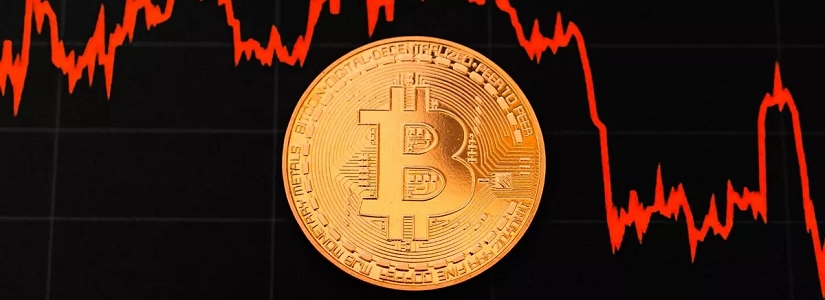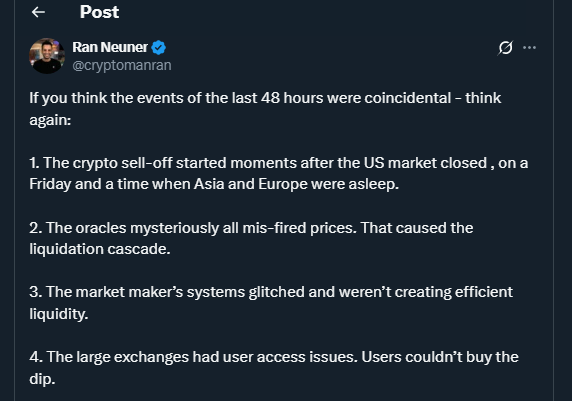TL;DR
- The crypto market saw over $19 billion wiped out in a single weekend, hitting major assets like Bitcoin and Ethereum.
- Analysts suggest the collapse may have been a highly coordinated event rather than a natural market correction.
- Binance’s internal pricing system may have been exploited, triggering massive forced liquidations and amplifying the panic across multiple global exchanges.
The weekend brought one of the most severe price crashes in crypto history. Bitcoin, Ethereum, and nearly every major digital asset lost significant value, and the market hemorrhaged more than $19 billion. While the initial panic followed former US President Donald Trump’s unexpected tariff announcement on Chinese tech exports, further investigation points to deeper, coordinated factors that drove the sell-off.
Several experts argue that the crash was unusually synchronized. Crypto commentator Ran Neuner noted that the sell-off began immediately after US markets closed Friday, when trading activity in Europe and Asia was minimal. At the same time, many oracles displayed inconsistent prices, liquidity across platforms disappeared, and users struggled to access exchanges. Major data platforms were either offline or reporting inaccurate information, leaving traders in the dark during the market turmoil. This unprecedented lack of transparency intensified the panic and created opportunities for sophisticated actors to take advantage of rapid price movements.
Binance Collateral System Under Scrutiny
Another prevailing theory suggests that Binance’s internal pricing system may have been exploited. Analysts like ElonTrades claim the exchange’s Unified Account system, which allows multiple assets as collateral for leveraged positions, had a vulnerability. Traders allegedly manipulated internal prices of tokens like USDe, wBETH, and BNSOL, triggering automatic liquidations and cascading losses across platforms.

This manipulation reportedly forced between $500 million and $1 billion in liquidations while strategic short positions netted some actors $192 million. The timing coincided with Trump’s tariff announcement, amplifying market panic and spreading the sell-off to other exchanges. Observers note that while the losses were severe, the recovery in trading volumes and asset prices demonstrates the market’s ability to absorb shocks quickly and recover momentum faster than in previous crashes.
Despite the chaos, crypto assets are showing signs of recovery. Bitcoin has climbed back to $115,025, up 2.85% in the past 24 hours, and Ethereum has risen to $4,160, marking an 8.5% increase. Many investors see this as a reminder of crypto’s resilience and the growing sophistication of market participants, highlighting both risks and opportunities in the increasingly active digital asset space.











